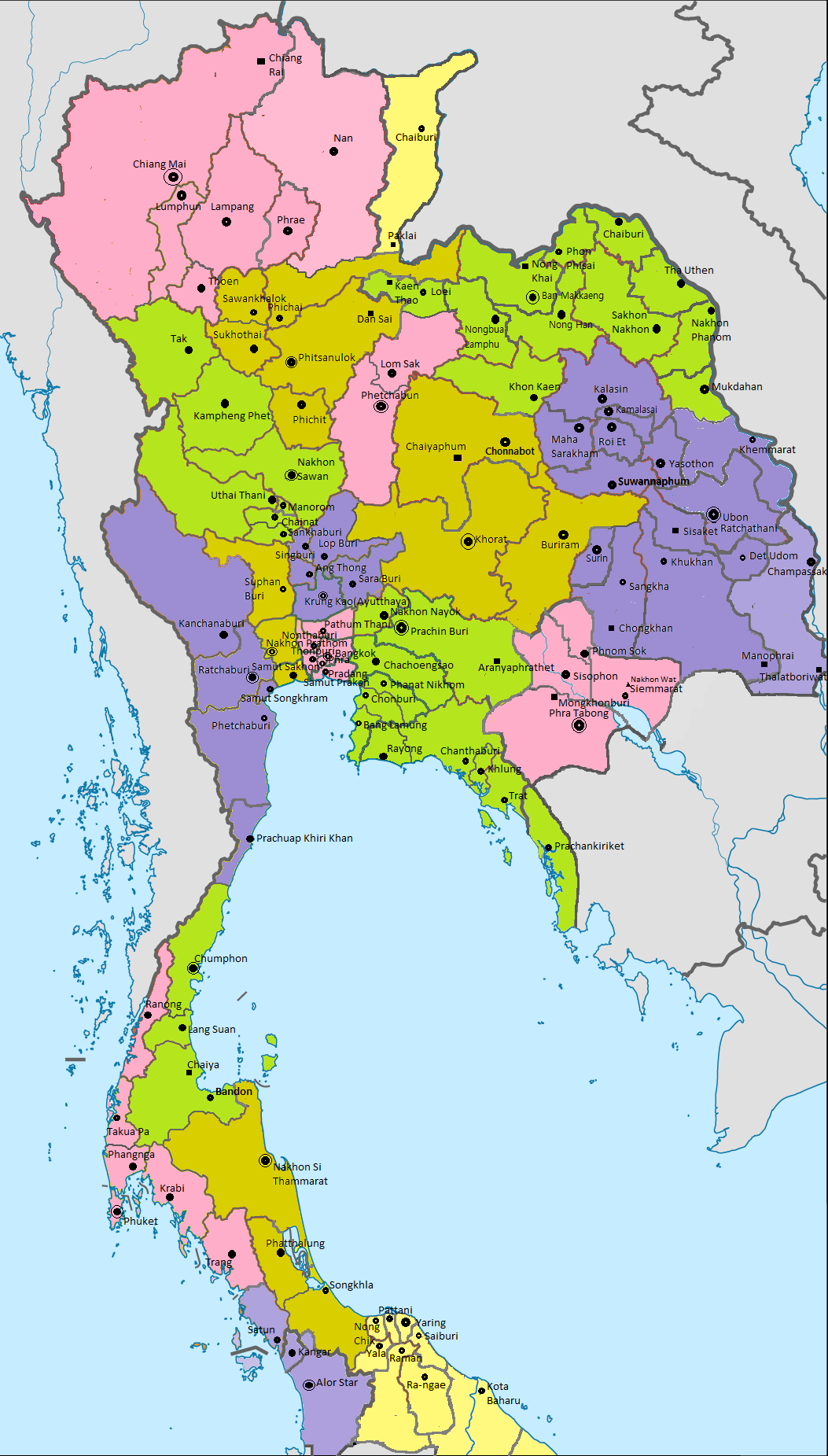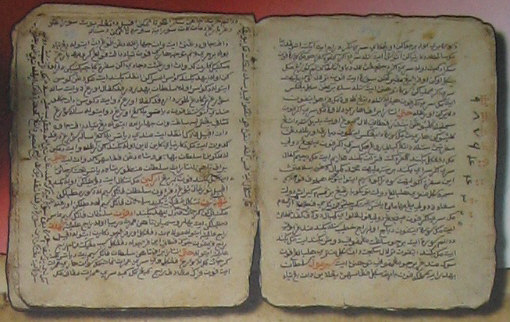|
Reman
The Kingdom of Reman or Kingdom of Rahman ( ms, Kerajaan Reman; Jawi: كراجأن رمان; ; ) was a landlocked semi-independent Malay kingdom established in northern Malay Peninsula. It was one of seven regions of Pattani Kingdom, an autonomous tributary state of Siam, between 1810 and 1902. Tuan Mansor, a member of the Patani aristocracy, ascended to the throne in 1810. The state's territory straddles the present-day Malaysia-Thailand border, covering Amphoe Raman in Yala province in Thailand, as well as Upper Perak region and parts of Jeli and Upper Kelantan regions in Malaysia. Etymology The name of the state may be derived from a Patani Malay word ''rama' '', cognate to standard Malay ''ramai'', meaning "a large assembly". It is likely named after a growing settlement founded in the area around the late 18th century. The earliest English-language reference of the state was made in 1818, between an agreement by the Governor of Prince of Wales' Island (Penang ... [...More Info...] [...Related Items...] OR: [Wikipedia] [Google] [Baidu] |
Reman Malay
Reman Malay (Reman: ', Jawi: , ms, Bahasa Melayu Reman), also known by several names such as Patani, Baling, Grik and Tukugho, is a Malayic language spoken in the states of Kedah and Perak in northern Peninsular Malaysia. In the state of Kedah it is spoken in the districts of Baling, Padang Terap, Sik and Yan while in Perak it is spoken in Hulu Perak but also in some areas within Kerian and Larut, Matang and Selama districts, especially in the towns of Batu Kurau and Bukit Gantang. Despite being located within these two states, Reman Malay is not closely related to neighbouring Kedahan and Perakian varieties but instead more closely related or an offshoot of Kelantan-Patani Malay. History and etymology The name ''Reman'' comes from the Malay kingdom of Reman, a semi-independent kingdom which is part of the Greater Patani Confederation. Reman existed from the early 19th century until it was dissolved in 1902. This kingdom once ruled what is now northern Perak (Hulu Perak) ... [...More Info...] [...Related Items...] OR: [Wikipedia] [Google] [Baidu] |
Kelantan-Pattani Malay
Kelantan-Pattani Malay (; ; in Pattani; in Kelantan) is an Austronesian language of the Malayic subfamily spoken in the Malaysian state of Kelantan and the neighbouring southernmost provinces of Thailand. It is the primary spoken language of Thai Malays, but is also used as a lingua franca by ethnic Southern Thais in rural areas, Muslim and non-Muslim and the Sam-Sam, a mostly Thai-speaking population of mixed Malay and Thai ancestry. Kelantan-Pattani Malay is highly divergent from other Malay varieties because of its geographical isolation from the rest of the Malay world by high mountains, deep rainforests and the Gulf of Thailand. In Thailand, it is also influenced by Thai. Kelantanese-Pattani Malay is distinct enough that radio broadcasts in Standard Malay cannot be understood easily by native speakers of Kelantan-Pattani Malay, such as those in Thailand, who are not taught the standard variety of the language. Unlike Malaysia where Standard Malay is compulsory in the ... [...More Info...] [...Related Items...] OR: [Wikipedia] [Google] [Baidu] |
Malay People
Malays ( ms, Orang Melayu, Jawi: أورڠ ملايو) are an Austronesian ethnic group native to eastern Sumatra, the Malay Peninsula and coastal Borneo, as well as the smaller islands that lie between these locations — areas that are collectively known as the Malay world. These locations are today part of the countries of Malaysia, Indonesia (eastern and southern Sumatra, Bangka Belitung Islands, western coastal Borneo ( Kalimantan) and Riau Islands), southern part of Thailand ( Pattani, Satun, Songkhla, Yala and Narathiwat), Singapore and Brunei Darussalam. There is considerable linguistic, cultural, artistic and social diversity among the many Malay subgroups, mainly due to hundreds of years of immigration and assimilation of various regional ethnicity and tribes within Maritime Southeast Asia. Historically, the Malay population is descended primarily from the earlier Malayic-speaking Austronesians and Austroasiatic tribes who founded several ancient mariti ... [...More Info...] [...Related Items...] OR: [Wikipedia] [Google] [Baidu] |
Hulu Perak District
Hulu Perak District (Upper Perak) is a List of districts in Malaysia, district in Perak, Malaysia. As the largest district in Perak, there are border to the east of the district is the state of Kelantan, to the west is Kedah, to the south is the district of Kuala Kangsar District, Kuala Kangsar while to the south-west is the district of Larut, Matang and Selama. Hulu Perak also shares a border with Betong District of Thailand. The seat of the district is Gerik, which is also the largest town of the district. The highest point of the district is located at Titiwangsa Mountains, with 1,533 m high Ulu Titi Basah peak near the Thai/Malaysian border, and Temenggor Lake. History In 1511, after the fall of the Malacca Sultanate to the Portuguese, Mahmud Shah of Malacca, Sultan Mahmud Shah retreated and established his government in Bintan Island, Bentan. In 1526 the Portuguese attacked his domain again and forced him to retreat to Kampar Regency, Kampar and to establish his rule there. ... [...More Info...] [...Related Items...] OR: [Wikipedia] [Google] [Baidu] |
Pattani Kingdom
Patani, or the Sultanate of Patani ( Jawi: كسلطانن ڤطاني) was a Malay sultanate in the historical Pattani Region. It covered approximately the area of the modern Thai provinces of Pattani, Yala, Narathiwat and part of the northern modern-day Malaysia it is Kelantan. The 2nd–15th century state of Langkasuka and 6–7th century state of Pan Pan may or may not have been related. The golden age of Patani started during the reign of the first of its four successive queens, Raja Hijau (The Green Queen), who came to the throne in 1584 and was followed by Raja Biru (The Blue Queen), Raja Ungu (The Purple Queen) and Raja Kuning (The Yellow Queen). During this period the kingdom's economic and military strength was greatly increased to the point that it was able to fight off four major Siamese invasions. It had declined by the late 17th century and it was invaded by Siam in 1786, which eventually absorbed the state after its last raja was deposed in 1902. Predecessors ... [...More Info...] [...Related Items...] OR: [Wikipedia] [Google] [Baidu] |
Patani Kingdom
Patani, or the Sultanate of Patani ( Jawi: كسلطانن ڤطاني) was a Malay sultanate in the historical Pattani Region. It covered approximately the area of the modern Thai provinces of Pattani, Yala, Narathiwat and part of the northern modern-day Malaysia it is Kelantan. The 2nd–15th century state of Langkasuka and 6–7th century state of Pan Pan may or may not have been related. The golden age of Patani started during the reign of the first of its four successive queens, Raja Hijau (The Green Queen), who came to the throne in 1584 and was followed by Raja Biru (The Blue Queen), Raja Ungu (The Purple Queen) and Raja Kuning (The Yellow Queen). During this period the kingdom's economic and military strength was greatly increased to the point that it was able to fight off four major Siamese invasions. It had declined by the late 17th century and it was invaded by Siam in 1786, which eventually absorbed the state after its last raja was deposed in 1902. Predecessors ... [...More Info...] [...Related Items...] OR: [Wikipedia] [Google] [Baidu] |
Jeli District
The Jeli District (Jawi: جلي) is a district and a parliamentary constituency in western Kelantan, Malaysia. As of 2010, the district's population is estimated to be 42,150. Jeli is administered by the Jeli District Council. Jeli is bordered by the state of Perak to the west, the Thai district of Waeng to the north, Tanah Merah district to the north east and Kuala Krai district to the south east. Most people in Jeli work as rubber tappers. The rubber plantations which belong to the local people also attract people from outside to come and work. Commonly families own a small plantation of up to in size. The history of Jeli began when the government encouraged the people around Kelantan to start a great area of agriculture. This process began with a period of land clearing, or logging. History Jeli district (jajahan) was originally an autonomous sub-district (Jajahan Kecil), formed on 1 July 1982 from parts of Tanah Merah (Jeli and Belimbing) and Kuala Krai (Kuala Balah ... [...More Info...] [...Related Items...] OR: [Wikipedia] [Google] [Baidu] |
Gua Musang District
Gua Musang ( Jawi: ڬوا موسڠ; Chinese: 话望生, Kelantanese: ''Guo Musae'') is a town, district and parliamentary constituency in southern Kelantan, Malaysia. It is the largest district in Kelantan. Gua Musang is administered by the Gua Musang District Council. Gua Musang district is bordered by the state of Pahang to the south, Terengganu to the east, Perak to the west and the Kelantanese districts of Kuala Krai and Jeli to the north. It is a small railway town about 140 km south of state capital Kota Bharu. Gua Musang is represented by Tengku Razaleigh Hamzah in the Dewan Rakyat. The town lies on the KTM East Coast Line, from Tumpat, near the border with Thailand, to Gemas, Negeri Sembilan. The Lojing Autonomous Sub-District (Jajahan Kecil Lojing) is in the western part of Gua Musang constituency. Geography Gua Musang literally means " Civet Cat Cave". On the eastern side of this town stands Bukit Gua Musang, a barren hill of rocks and deceptive stone-steps r ... [...More Info...] [...Related Items...] OR: [Wikipedia] [Google] [Baidu] |
Cognate
In historical linguistics, cognates or lexical cognates are sets of words in different languages that have been inherited in direct descent from an etymology, etymological ancestor in a proto-language, common parent language. Because language change can have radical effects on both the sound and the meaning of a word, cognates may not be obvious, and often it takes rigorous study of historical sources and the application of the comparative method to establish whether lexemes are cognate or not. Cognates are distinguished from Loanword, loanwords, where a word has been borrowed from another language. The term ''cognate'' derives from the Latin noun '':wikt:cognatus, cognatus blood relative'. Characteristics Cognates need not have the same meaning, which semantic drift, may have changed as the languages developed independently. For example English language, English ''wikt:starve#English, starve'' and Dutch language, Dutch ''wikt:sterven#Dutch, sterven'' 'to die' or German languag ... [...More Info...] [...Related Items...] OR: [Wikipedia] [Google] [Baidu] |
Patani
Patani Darussalam ( Bahasa Malayu Arabic : , also sometimes Patani Raya or Patani Besar, "Greater Patani"; th, ปาตานี) is a historical region in the Malay peninsula. It includes the southern Thai provinces of Pattani, Yala (Jala), Narathiwat (Menara), and parts of Songkhla (Singgora). Its capital was the town of Patani. The Patani region has historical affinities with the Singgora ( Songkhla), Ligor (Nakhon Si Thammarat), Lingga (near Surat Thani) and Kelantan sultanates dating back to the time when the Patani Kingdom was a semi-independent Malay sultanate paying tribute to the Siamese kingdoms of Sukhothai and Ayutthaya. After Ayutthaya fell to the Burmese in 1767, the Sultanate of Patani gained full independence, but under King Rama I, it again came under Siam's control. In recent years, a secessionist movement has sought the establishment of a Malay Islamic state, Patani Darussalam, encompassing the three southern Thai provinces. This campaign has t ... [...More Info...] [...Related Items...] OR: [Wikipedia] [Google] [Baidu] |



.png)